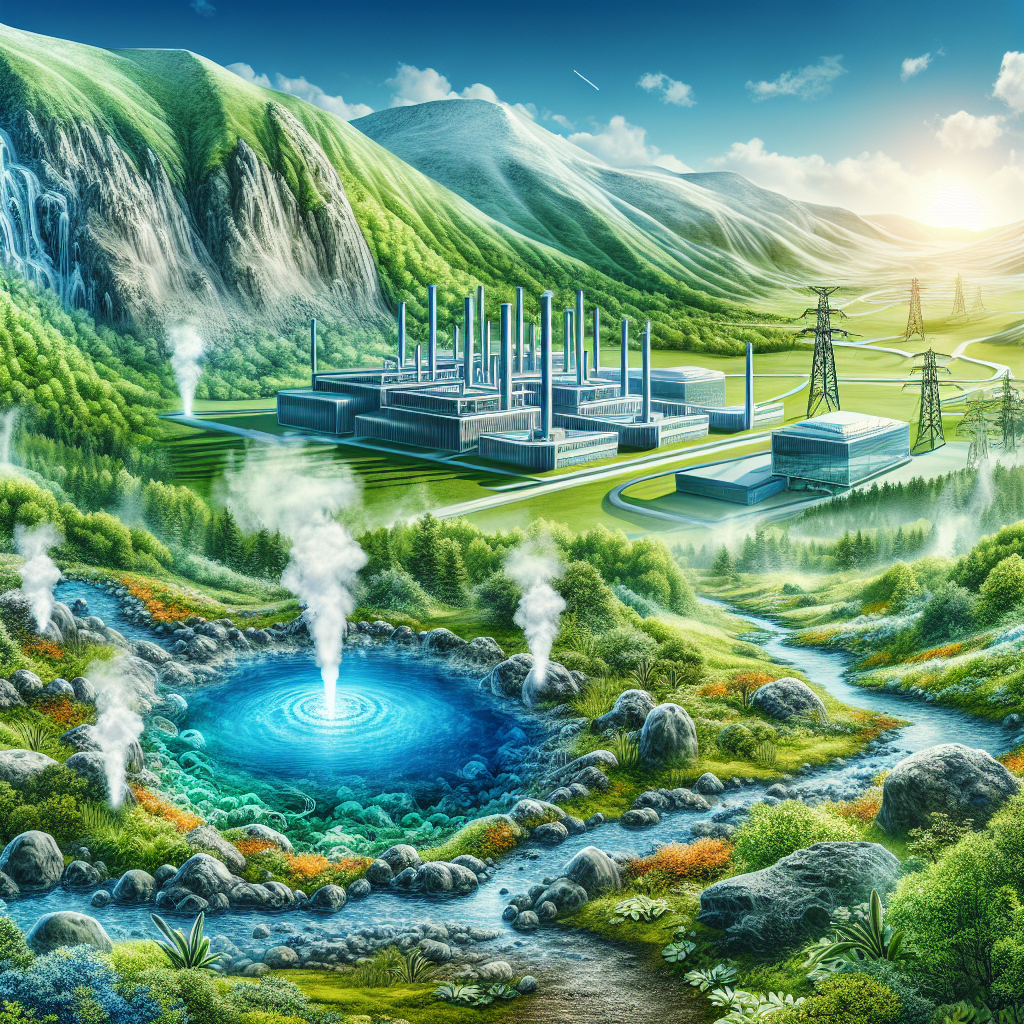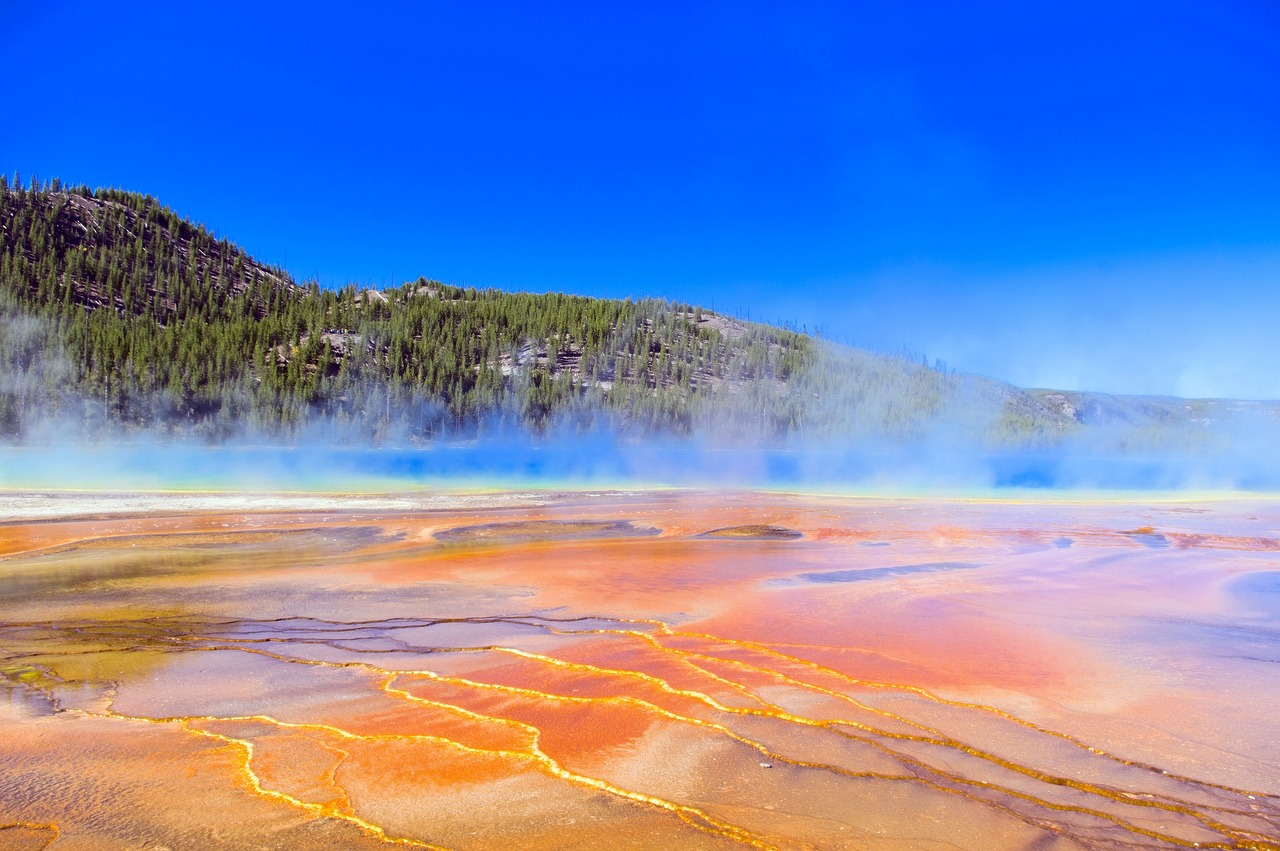Imagine a world where endless renewable energy is just a step away, where the power of nature̵7;s hot springs can be harnessed to fuel our ever-growing energy needs. In the fascinating realm of renewable energy, hot springs are emerging as an innovative solution with the potential to revolutionize the way we power our lives. These natural wonders, abundant in geothermal energy, offer a tantalizing glimpse into a sustainable future. By tapping into the heat generated beneath our feet, scientists and engineers are paving the way towards a greener world, where hot springs take center stage as a vital source of renewable power. Discover the untapped potential of hot springs and the promising role they play in our relentless pursuit of sustainable energy.
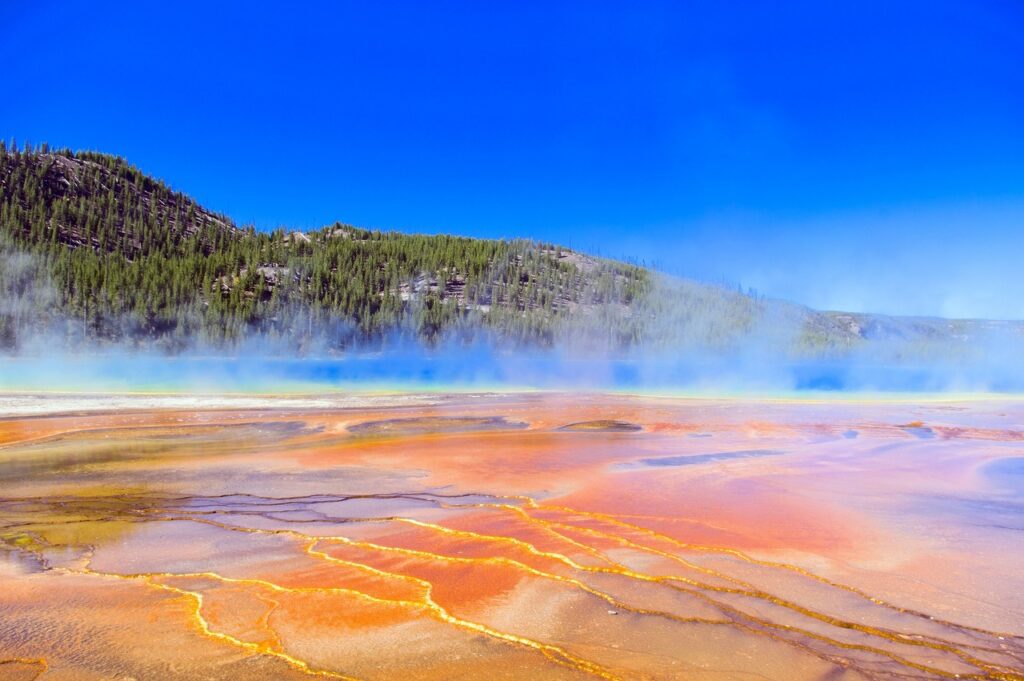
Exploring the Power of Hot Springs
Hot springs are a natural wonder that have captivated humans for centuries. These unique geological features provide a source of hot water, heated by the Earth’s geothermal energy. With their abundance and accessibility, hot springs are an ideal resource for harnessing renewable energy. In this article, we will delve into the world of hot springs and explore their potential in generating clean and sustainable power.
The Natural Heat Source
Hot springs are the result of geothermal heat rising from the Earth’s crust. Deep within the layers of the Earth, there is a vast reservoir of heat generated by the decay of radioactive elements and the leftover heat from the planet’s formation. This heat radiates towards the surface, warming underground water reserves and creating hot springs. The water in hot springs can reach temperatures of up to 200 degrees Fahrenheit or higher, making it an excellent source of geothermal energy.
Harnessing Geothermal Energy
Geothermal energy is a form of renewable energy derived from the heat stored within the Earth. It is a sustainable and reliable source of power that can be harnessed for electricity generation and heating purposes. Hot springs play a crucial role in the utilization of geothermal energy. By tapping into the heat stored in these springs, we can harness the power of geothermal energy and convert it into electricity to meet our energy needs.
Understanding Geothermal Energy
What is Geothermal Energy?
Geothermal energy refers to the heat energy trapped beneath the Earth’s surface. It is a clean and renewable source of power that can be harnessed using various technologies. The heat energy generated by geothermal sources can be used directly for heating or converted into electricity. Unlike fossil fuels, which are finite resources, geothermal energy is virtually inexhaustible, making it an attractive alternative for meeting our growing energy demands.
How does Geothermal Energy Work?
Geothermal power plants utilize the heat from hot springs or other geothermal reservoirs to generate electricity. A geothermal power plant typically consists of three main components: the geothermal resource, a power plant, and a distribution system. The hot water or steam from the geothermal reservoir is brought to the surface through drilling. It then passes through a turbine, which drives a generator to produce electricity. The generated power is then transmitted through a distribution system to homes, businesses, and industries.
Benefits of Geothermal Energy
Renewable and Sustainable
One of the key advantages of geothermal energy is its renewable nature. As long as the Earth continues to generate heat, we can tap into this resource and produce electricity without depleting it. Hot springs, being a part of the geothermal energy system, offer a steady and reliable source of sustainable power.
Low Emissions and Air Pollution
Geothermal energy production is considered a clean energy source. Unlike fossil fuels, which release greenhouse gases and contribute to air pollution, geothermal power plants have minimal emissions. By harnessing the heat from hot springs, we can significantly reduce our carbon footprint and mitigate the impacts of climate change.
Reliable and Continuous Power Generation
Hot springs provide a constant source of heat, ensuring that geothermal power plants can operate continuously and reliably. Unlike solar or wind power, which are dependent on weather conditions, geothermal energy is available 24/7, making it a dependable source of power that can meet the energy demands of communities and industries.
Energy Independence and Security
By tapping into the potential of hot springs and geothermal energy, countries can reduce their dependence on imported fossil fuels. This not only enhances energy security but also helps to create a more sustainable and resilient energy system. Geothermal energy offers a viable pathway towards achieving energy independence and reducing reliance on foreign resources.
Utilizing Hot Springs for Geothermal Power
Identification and Exploration of Hot Springs
The first step in harnessing geothermal energy from hot springs is the identification and exploration of suitable sites. Geologists and geothermal experts use various techniques, including geological surveys, heat flow measurements, and satellite imagery, to identify potential hot springs. Once a site is identified, detailed exploration, including drilling, is carried out to assess the size and temperature of the geothermal reservoir.
Drilling and Extraction Techniques
Drilling is a crucial aspect of geothermal energy development. It involves drilling deep into the Earth’s crust to access the hot water or steam trapped underground. The drilling process requires specialized equipment and expertise to ensure safe and efficient extraction of geothermal resources. The extracted hot water or steam is then utilized to generate electricity or for direct heating applications.
Power Plant Design and Construction
Designing and constructing a geothermal power plant involves careful planning and engineering. The power plant must be located close to the geothermal resource for efficient heat transfer. Different technologies, such as flash steam, binary cycle, and dry steam, can be employed depending on the temperature and pressure of the geothermal resource. The construction process involves the installation of turbines, generators, and other necessary equipment to convert the geothermal energy into electricity.

Hot Springs as a Source of Clean Heat
Direct Use of Geothermal Energy for Heating
In addition to generating electricity, hot springs can be directly used as a source of clean heat. The hot water from the springs can be circulated to provide heating for residential and commercial buildings. This application is especially valuable in cold climates, where geothermal heat can significantly reduce the energy consumption and carbon emissions associated with traditional heating systems.
Applications in Residential and Commercial Settings
Geothermal energy from hot springs can be harnessed for a wide range of applications in residential and commercial settings. It can be used for space heating, water heating, and even for cooling purposes through the use of geothermal heat pumps. These heat pumps utilize the steady temperature of the Earth to provide efficient heating and cooling solutions, offering significant energy savings and environmental benefits.
Hot Springs for Therapeutic and Recreational Purposes
The Healing Properties of Hot Springs
Hot springs have long been revered for their healing properties. The mineral-rich water and the warmth of the springs offer numerous health benefits, such as relaxation, stress relief, improved circulation, and relief from various skin conditions and musculoskeletal disorders. Hot spring therapy, also known as balneotherapy, has been practiced for centuries and continues to attract visitors seeking natural remedies and wellness experiences.
Wellness Tourism and Spa Industry
Hot springs have become popular attractions for wellness tourism and the spa industry. People from around the world visit hot spring destinations to indulge in therapeutic baths, massages, and other rejuvenating treatments. The serene and natural settings of hot springs make them ideal locations for wellness retreats, providing a unique blend of relaxation, healing, and exploration of the natural environment.
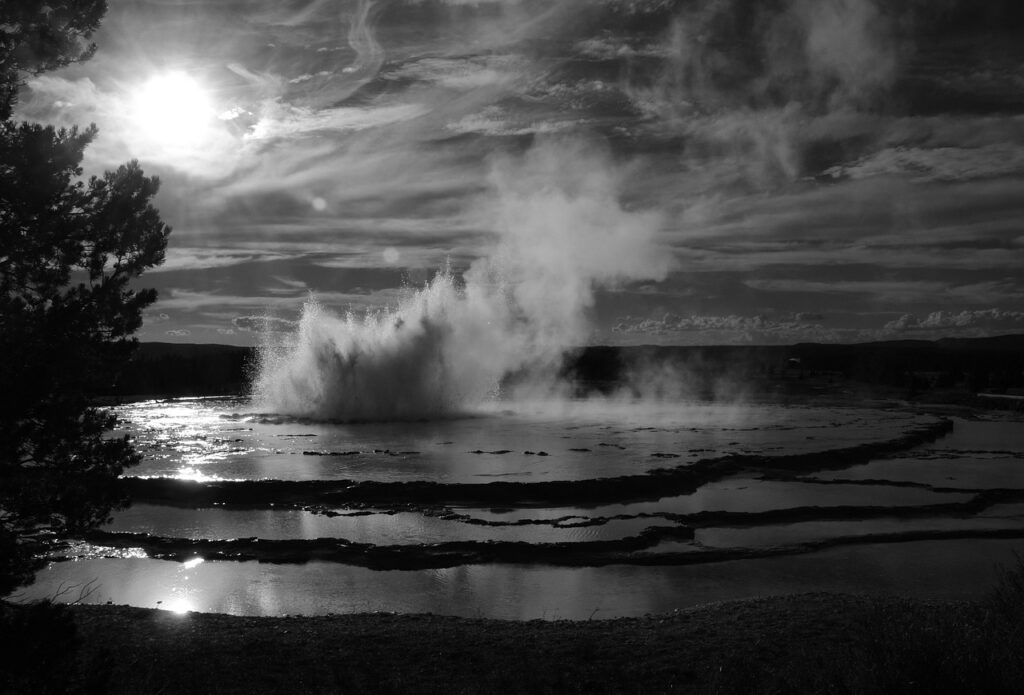
Environmental Considerations and Challenges
Impacts on Geothermal Reservoirs
The development and operation of geothermal power plants, including those utilizing hot springs, can have environmental implications. Excessive extraction of geothermal resources can lead to the depletion and cooling of the reservoir over time. Careful management and monitoring of the resource are essential to ensure the long-term sustainability of geothermal energy generation.
Water Usage and Contamination
Geothermal power plants require a significant amount of water for operation. While hot spring water is naturally replenished, it is important to manage water usage responsibly to minimize any adverse effects on the environment. Additionally, precautions must be taken to prevent the contamination of water sources during the drilling and extraction process, ensuring that water quality remains uncompromised.
Induced Seismicity and Volcanic Activity
Geothermal energy extraction can occasionally trigger small seismic events, known as induced seismicity. This is typically a result of the high-pressure injection of water or the extraction of steam, which can cause stress redistribution in the Earth’s crust. While these events are generally small and harmless, they need to be monitored and managed to minimize any potential risks. Furthermore, hot springs are often associated with volcanic activity, requiring careful assessment of volcanic hazards in geothermal development.
Geothermal Potential in Different Regions
Global Geothermal Resources
Hot springs and geothermal energy resources are found all around the world. However, certain regions have a higher potential for geothermal energy production due to their geological characteristics. Countries situated along tectonic plate boundaries, such as Iceland, the Philippines, and New Zealand, have significant geothermal resources. It is important to explore and utilize these resources to their fullest potential to achieve a global transition to sustainable energy systems.
Major Geothermal Hotspots
Some regions are particularly known for their abundance of hot springs and geothermal power generation. For example, the Geysers in California, USA, is the largest geothermal power field in the world, harnessing the power of hot springs to generate electricity. Similarly, the Great Rift Valley in East Africa is known for its geothermal potential, with countries like Kenya and Ethiopia actively exploring and developing their geothermal resources.
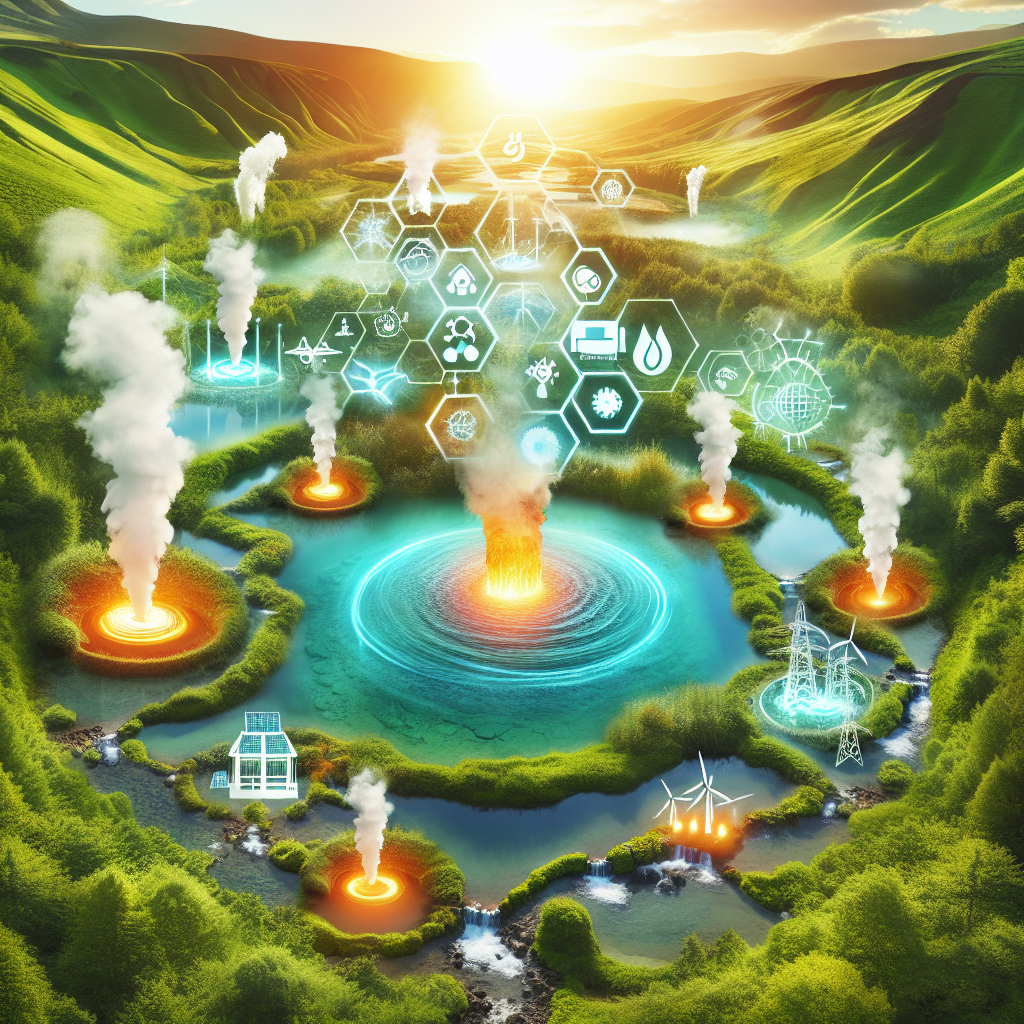
Government Support and Policies
Incentives and Subsidies for Geothermal Energy
Governments play a crucial role in promoting geothermal energy development through incentives and subsidies. These can include tax credits, grants, and feed-in tariffs to encourage investment in geothermal projects. By providing financial support and favorable policies, governments can stimulate the growth of the geothermal industry and accelerate the transition to a clean energy future.
Regulatory Framework for Development
Establishing a robust regulatory framework is essential for the sustainable development of geothermal resources. Governments need to enact laws and regulations that govern geothermal exploration, extraction, and operation. This ensures the proper management of environmental impacts, facilitates resource allocation, and provides a clear framework for the industry.
Future Outlook and Advancements
Technological Innovations
Advancements in technology are continuously improving the efficiency and cost-effectiveness of geothermal energy production. Innovations in drilling techniques, materials, and heat exchange systems are making it easier to extract geothermal resources and convert them into usable energy. Additionally, research is being conducted to explore new technologies, such as enhanced geothermal systems, which could unlock even greater geothermal potential.
Exploration for Untapped Geothermal Resources
Despite the vast potential of geothermal energy, much of it remains untapped. Further exploration and assessment of potential hot springs and geothermal reservoirs are needed to fully understand the extent of this valuable resource. Governments, research institutions, and private entities are actively investing in geothermal exploration to identify new sources and expand the use of geothermal energy as a reliable and sustainable power source.
In conclusion, hot springs hold immense power when it comes to renewable energy. From their natural heat source to the extraction techniques and utilization for clean heat, there are numerous opportunities to harness geothermal energy. As we recognize the benefits of geothermal energy, countries around the world are beginning to tap into the potential of hot springs for power generation, heating, and even therapeutic purposes. With continued advancements in technology, exploration for untapped resources, and support from governments, the future of geothermal energy from hot springs looks promising. By capitalizing on this abundant and sustainable energy source, we can pave the way towards a greener and more resilient future.
